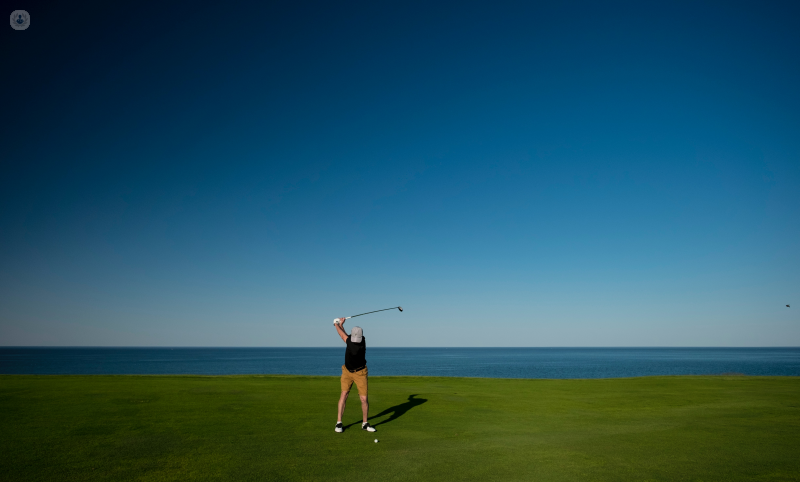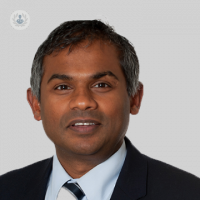What is the best treatment for golfer’s elbow?
Written by:Although many people underestimate it, golf is like any other sport - it’s a physically demanding game and carries many risks of injury. One of these injuries that players should be very familiar with is golfer’s elbow.
As spring approaches and golf enthusiasts reach for their balls and clubs, we decided to sit with orthopaedic surgeon, Mr Gunaratnam Shyamalan, to understand what causes this painful injury and what the most effective treatments are to alleviate the symptoms.

How do you get golfer’s elbow?
Golfer's elbow is most commonly caused by the overuse of muscles in the forearm that allow you to grip, rotate your arm and flex your wrist. The action of swinging a golf club involves repetitive flexing and gripping which can cause pulls or tiny tears in the tendons, but overuse from other sports or DIY are equally as common.
What are the symptoms?
The most common symptoms of golfer’s elbow are pain and/or tenderness which is usually felt on the inner side of the elbow that can radiate to the inner side of the forearm.
Weakness in the hand, wrist and forearm may also be felt and your elbow may feel stiff. Golfer's elbow can come on suddenly or chronically over a period of time.
Differential diagnosis may be related to the nerve running around the funny bone or injury to the elbow ligaments.
How is golfer’s elbow treated?
Rest and activity modification are initially the most effective treatments for golfer’s elbow. Putting the repetitive activity on hold will usually allow the muscles and tendons to repair. I always recommend warming up and warming down pre and post activity, and doing bite-sized amounts of activity so you spread the load.
To alleviate the symptoms of golfer’s elbow, ice packs wrapped in a towel can be applied to the area for short periods. You can do this for approximately 15 minutes at a time and up to three or four times a day. When applying the ice to your skin, you should check the skin every five minutes.
On occasions, a brace may be beneficial to help reduce any muscle or tendon sprain. Stretching exercises may also be suggested to help strengthen the affected area. A physiotherapist can advise on exercises, such as progressive loading of the tendon, which can be very effective when used as part of a treatment plan.
Pain relief such as taking an anti-inflammatory medication (both oral and topical) can be effective and, in some cases, an injection, shockwaves and/or laser therapy may be considered if other treatments such as rest and physiotherapy haven’t been successful.
It is important not to return to the activity until the pain has diminished. When the activity is reintroduced, it is important to do so gradually.
When should I see a doctor for it?
Most people will recover from golfer’s elbow with rest, pain relief and physiotherapy. If after three months the pain persists then advice from a specialist should be sought.
Does golfer’s elbow require surgery?
Time seems to be an important factor as most cases spontaneously resolve. It is unusual for golfer’s elbow to require surgery, however, if symptoms don’t improve with conservative treatment then surgery may be considered. This surgery can involve removing scar tissue around the tendon and encouraging new blood supply to promote healing.
If you are suffering with any of the symptoms mentioned in this article and need to see a specialist, visit Mr Gunaratnam Shyamalan’s Top Doctors profile and book a consultation with him.


